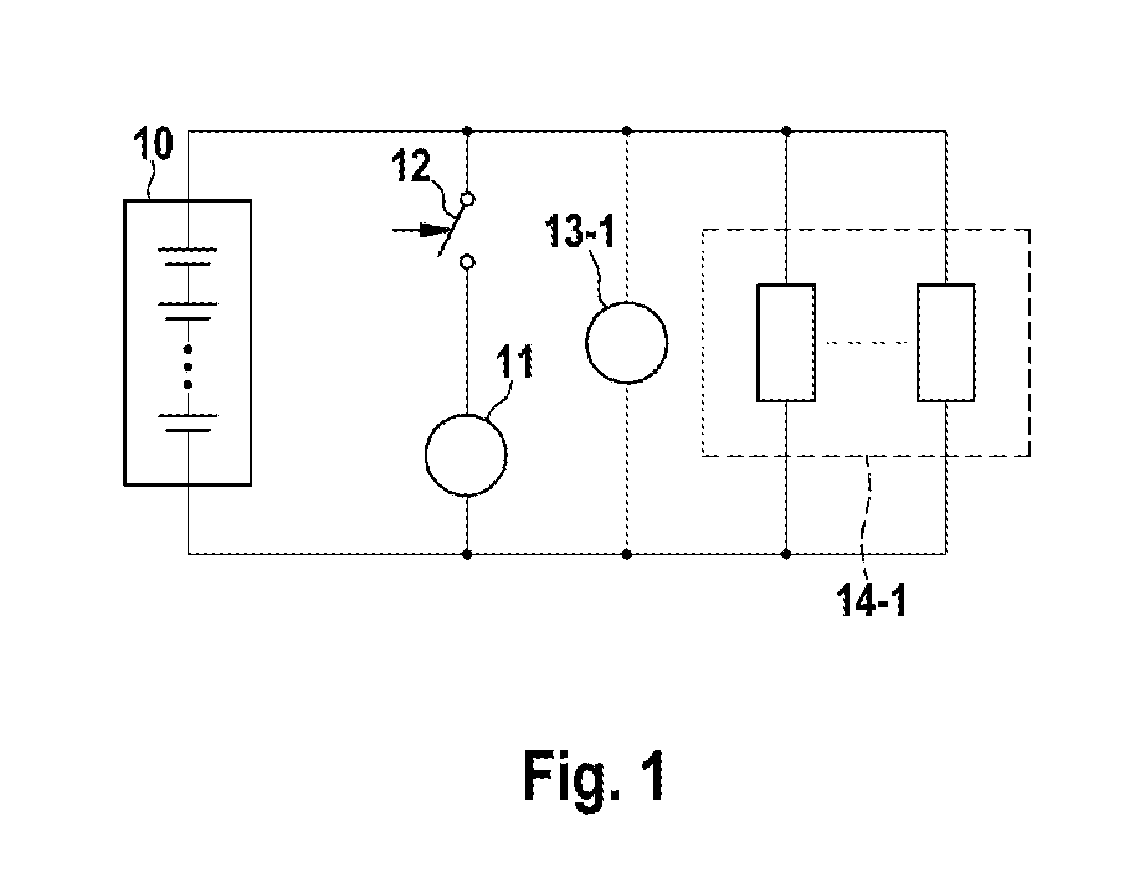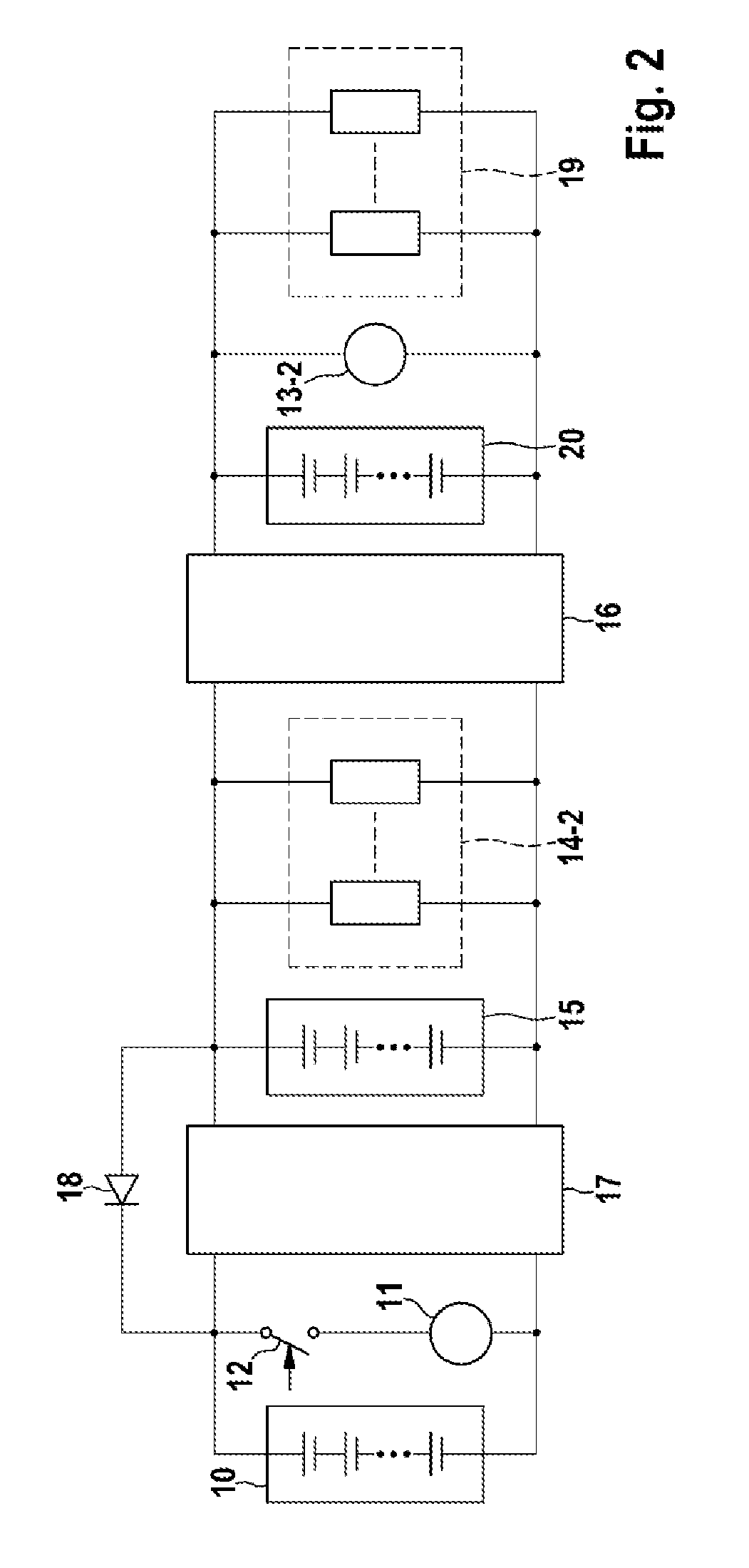Battery system for micro-hybrid vehicles comprising high-efficiency consumers
a micro-hybrid vehicle and consumer technology, applied in hybrid vehicles, battery/fuel cell control arrangements, electric devices, etc., can solve the problems of lead-acid battery service life, internal combustion engine load reduction, and fuel consumption of micro-hybrid motor vehicles already in series production today, and achieve the effect of long service li
- Summary
- Abstract
- Description
- Claims
- Application Information
AI Technical Summary
Benefits of technology
Problems solved by technology
Method used
Image
Examples
Embodiment Construction
[0022]FIG. 2 shows an exemplary embodiment of the battery system according to the invention. A first battery 10, which is preferably designed as a lithium-ion battery, supplies a voltage of preferably 10 V to 15 V to a starter circuit, wherein the exact voltage is dependent on the state of charge of the first battery 10. A starter 11 is connected to the first battery 10, said starter being designed to start an internal combustion engine (not illustrated). A switch 12, which is controlled by a starter signal, is connected in series with the starter 11. If the switch 12 is closed, the starter 11 is activated and a current flows from the first battery 10 through the starter 11. With preference, no further electrical consumers are provided parallel to the starter 11, in order to not additionally load the first battery 10. The starter circuit is connected to a low-voltage on-board electrical system by means of a coupling unit 17 which is designed as a DC / DC converter in the example. The ...
PUM
 Login to View More
Login to View More Abstract
Description
Claims
Application Information
 Login to View More
Login to View More - R&D
- Intellectual Property
- Life Sciences
- Materials
- Tech Scout
- Unparalleled Data Quality
- Higher Quality Content
- 60% Fewer Hallucinations
Browse by: Latest US Patents, China's latest patents, Technical Efficacy Thesaurus, Application Domain, Technology Topic, Popular Technical Reports.
© 2025 PatSnap. All rights reserved.Legal|Privacy policy|Modern Slavery Act Transparency Statement|Sitemap|About US| Contact US: help@patsnap.com



